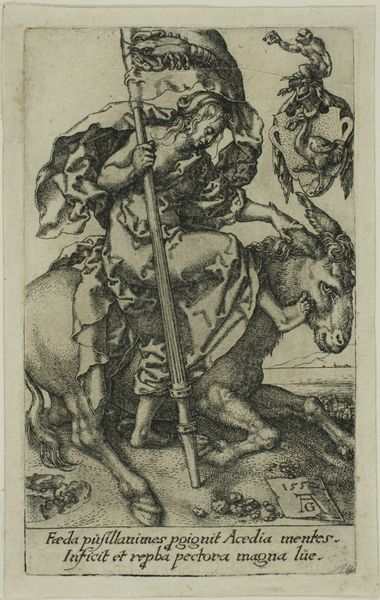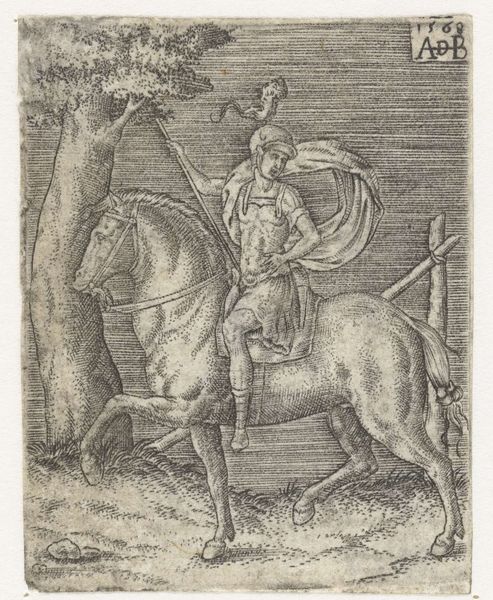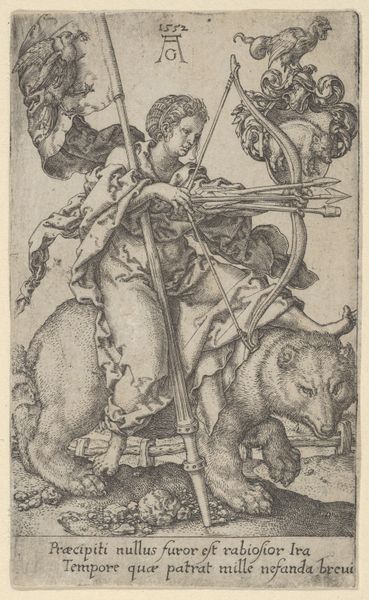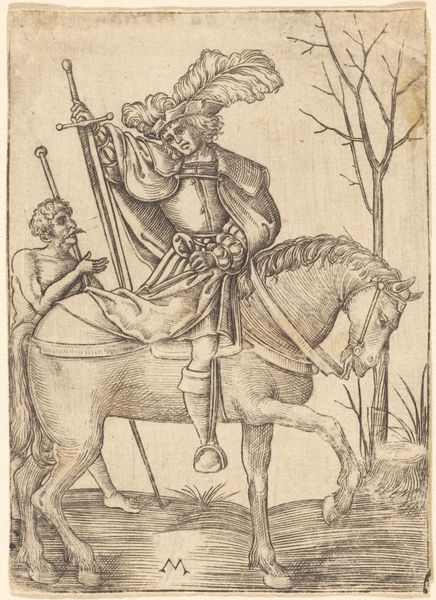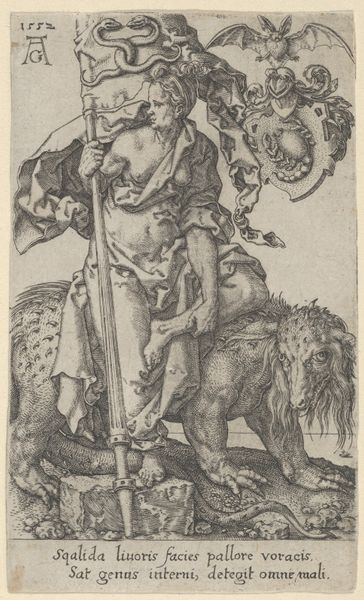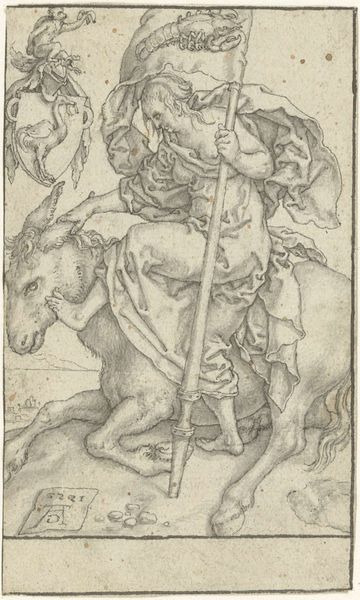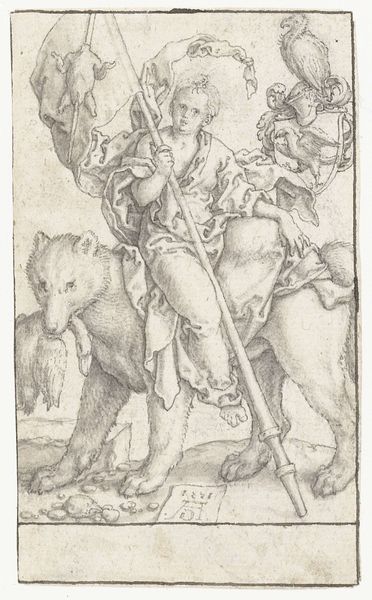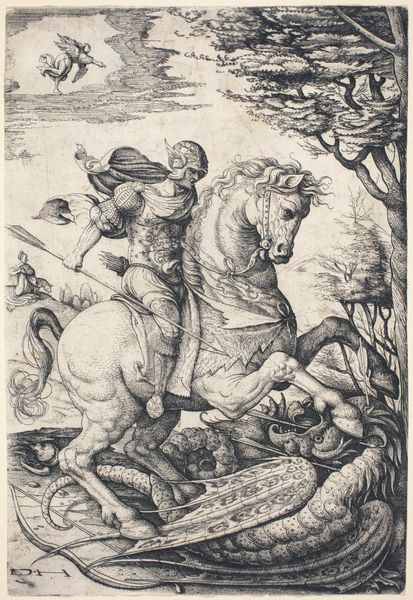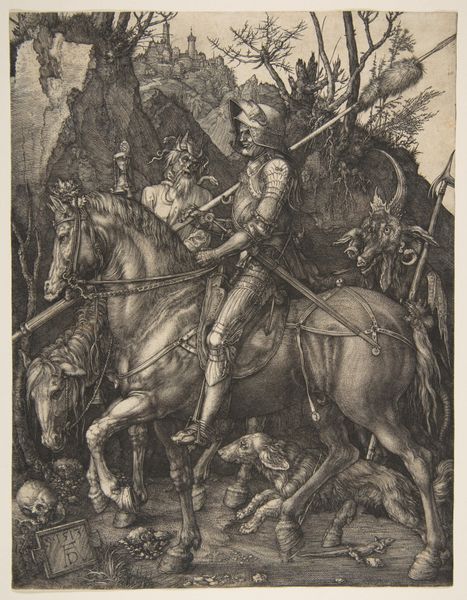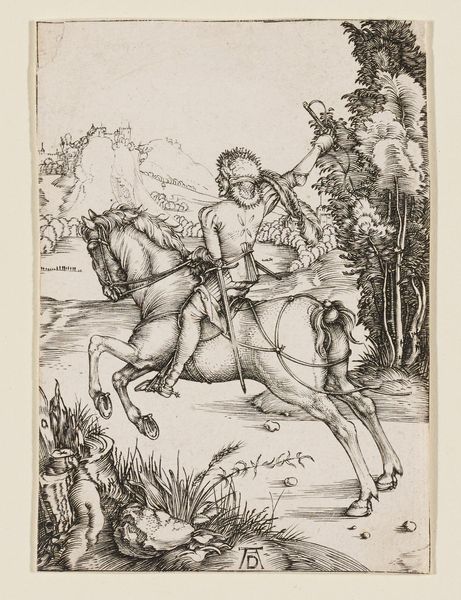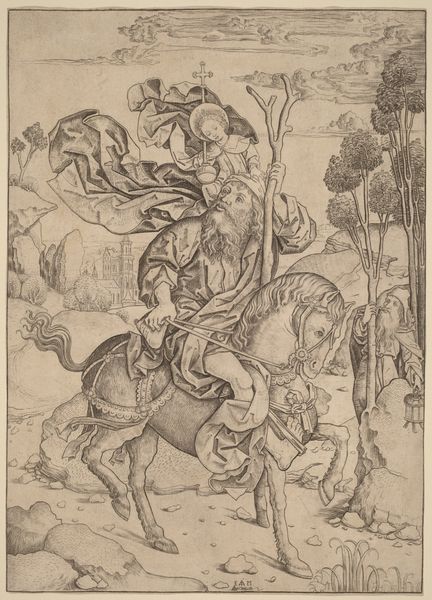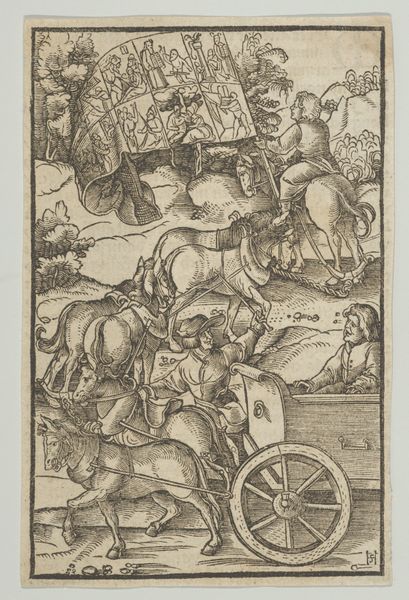
drawing, print, engraving
#
portrait
#
drawing
# print
#
landscape
#
11_renaissance
#
northern-renaissance
#
engraving
Dimensions: height 59 mm, width 43 mm
Copyright: Rijks Museum: Open Domain
Editor: Here we have Barthel Beham’s "Hellebaardier te paard", created sometime between 1512 and 1540. It's a print, an engraving… I find the details incredible, especially considering the scale. It gives me a sense of contained power, like a coiled spring. How do you interpret this work? Curator: The engraving depicts a halberdier, a soldier equipped with a combined spear and axe weapon, on horseback, set against a detailed landscape. What's striking to me is the conscious display of status. Notice how the halberd itself isn’t just a weapon. It functions almost like a scepter, doesn't it? A symbol of authority and a direct link to earlier iconographic traditions. Editor: So you see a connection between the weapon and royal symbols? Curator: Absolutely. The halberd projects power. Beyond the man, though, consider the horse. Its sturdy build, almost docile posture. Is this a warhorse or a parade horse? And what does *that* choice tell us about the image's function? Editor: I hadn't thought of it that way. I was more focused on the human figure. It makes me consider the whole image is perhaps less about combat and more about… projecting strength. Curator: Exactly! These symbols – the halberd, the horse, even the dense foliage – collectively create a portrait of power, stability and earthly control, tapping into cultural memories of heroism and order. It’s fascinating how seemingly simple images can carry such weight. Editor: I see it now, how Beham is deliberately using these symbols. Thanks for shedding some light on this artwork! Curator: My pleasure! It's rewarding to trace how cultural values are encoded and transmitted through art across generations.
Comments
No comments
Be the first to comment and join the conversation on the ultimate creative platform.
